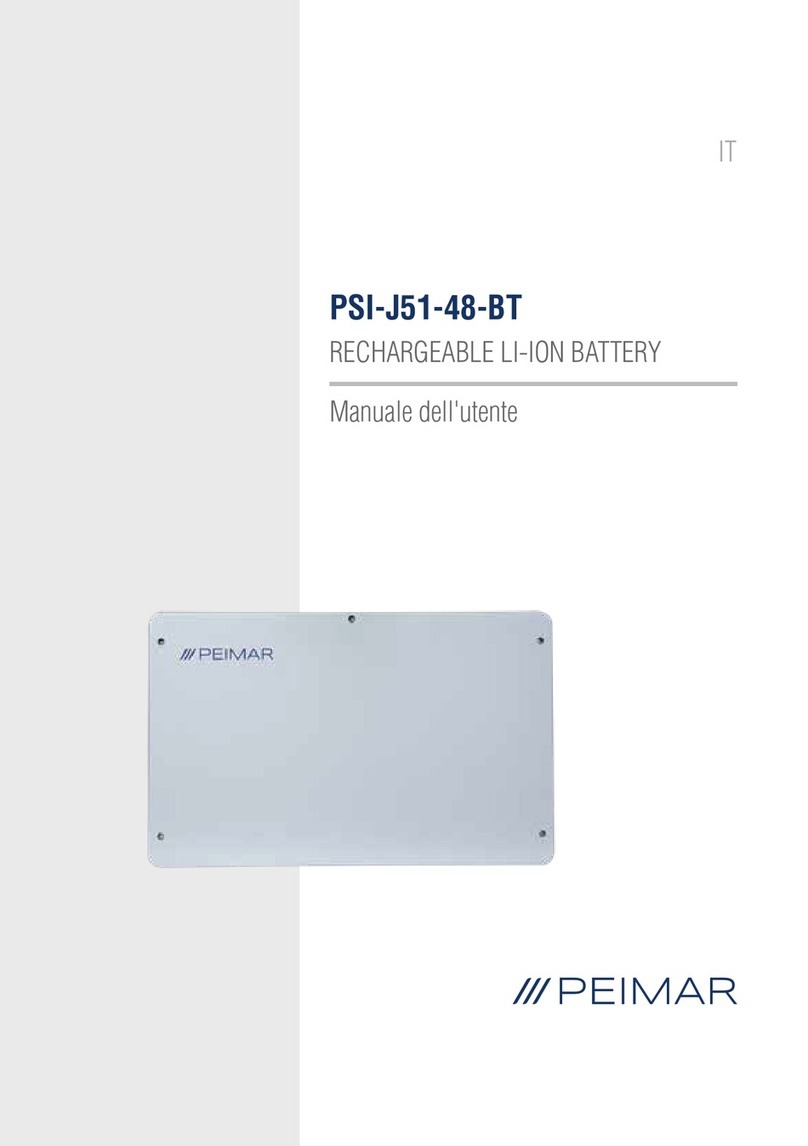
7
IT
1.3 Situazione di emergenza
Nonostante la struttura abbia un design protettivo, possono ugualmente
vericarsi danni alla batteria. Una piccola fuoriuscita di elettrolita può causare
danni all'involucro esterno; in caso di incendio e mancato trattamento tempestivo,
la batteria potrebbe essere soggetta a esplosione causando fuoriuscita di gas
velenosi come monossido di carbonio, anidride carbonica, ecc. In caso di
contatto con questi, si raccomandano le seguenti azioni protettive:
1. Contatto con gli occhi: sciacquare gli occhi con abbondante acqua corrente
e consultare un medico.
2. Contatto con la pelle: lavare accuratamente la zona di contatto con sapone
e consultare un medico.
3. Inalazione: in caso di fastidio, vertigini o vomito, consultare immediatamente
un medico.
4. Utilizzare un estintore FM-200 o anidride carbonica (CO2) per estinguere
l'incendio in caso di incendio nell'area in cui è installata la batteria. Indossare
una maschera antigas ed evitare di inalare gas tossici e sostanze nocive
prodotte dal fuoco.
5. Utilizzare un estintore ABC, se l'incendio non è causato dalla batteria e non
si è ancora diffuso su di esso.
AVVERTENZA
• Se si è appena vericato un incendio, provare prima
a scollegare l'interruttore automatico della batteria e
interrompere l'alimentazione, ma solo se è possibile farlo
senza mettersi in pericolo.
• Se la batteria è in amme, non tentare di estinguere l'incendio,
ma allontanarsi immediatament.
Potenziale pericolo di batteria danneggiata.
Rischio chimico: nonostante la sua robusta struttura, nalizzata alla protezione
contro qualsiasi tipo di danneggiamento, non è possibile escludere l'eventuale
rottura della batteria, a causa di eventuali danni meccanici o pressione interna.
Questi danni possono provocare una perdita di elettrolita, uido corrosivo e
inammabile. In caso di incendio, i gas tossici prodotti causeranno irritazione
alla pelle, agli occhi e problemi dovuti all'inalazione.




























